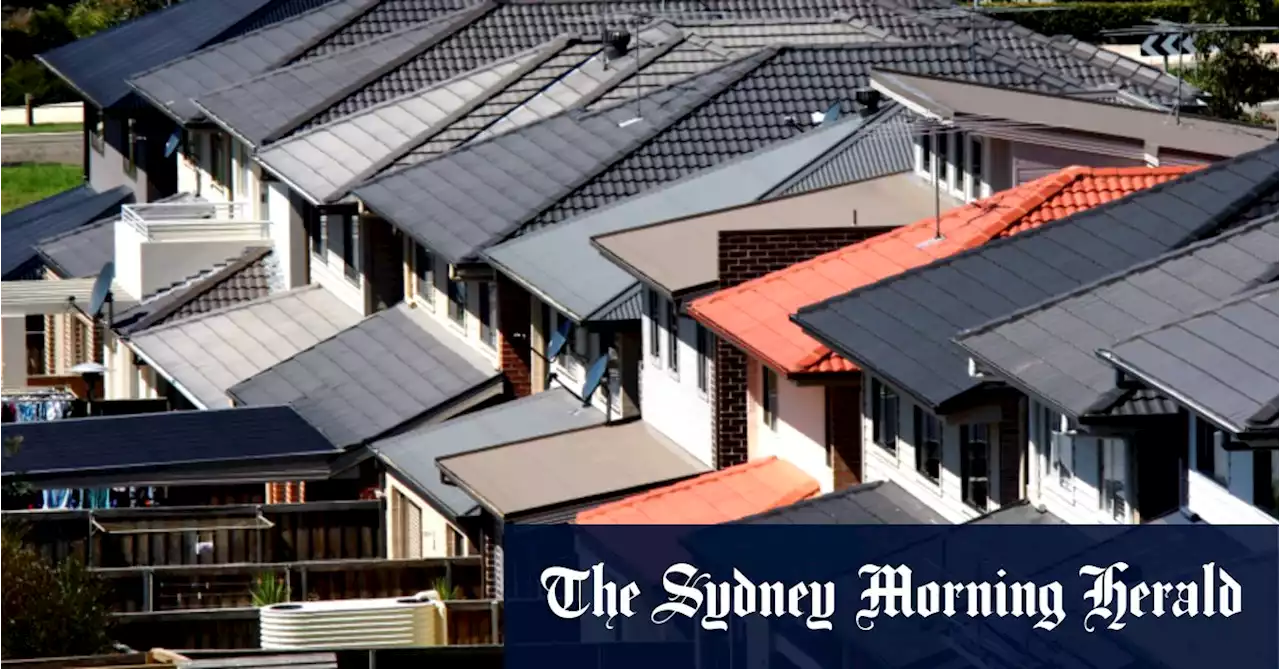They have significantly wound back pricing on the expected peak Reserve Bank of Australia cash rate, down from as much as 4.5 per cent tipped less than two months ago.
Money markets have significantly wound back pricing on the expected peak Reserve Bank of Australia cash rate to 3 per cent, down from as much as 4.5 per cent tipped less than two months ago.
Sydney’s median dwelling value of $1.087 million is now 5.3 per cent below its top early this year, while Melbourne’s median house price of $792,000 is 3.4 per cent below the peak.Money markets are betting there is about a 90 per cent chance the cash rate will rise another 0.5 of a percentage point to 1.85 per cent tomorrow, while Nomura economists are tipping an against-the-odds 0.75 of a percentage point rise because of strong underlying inflation and the low 3.5 per cent unemployment rate.
Property prices across the country are being monitored closely, as auction clearance rates in Sydney continue to fall.The higher priced and more indebted housing markets of Sydney and Melbourne again led the July declines, with Brisbane edging into negative territory for the first time in two years, plus Canberra and Hobart also falling.
“Although the housing market is only three months into a decline, the national home value index shows that the rate of decline is comparable with the onset of the global financial crisis in 2008, and the sharp downswing of the early 1980s.“Due to record high levels of debt, indebted households are more sensitive to higher interest rates, as well as the additional downside impact from very high inflation on balance sheets and sentiment.
RBA deputy governor Michele Bullock said in July that a 10 per cent national house price fall would put only 0.4 per cent of home borrowers in negative equity. If house prices fall 20 per cent, only 2.5 per cent of borrowers would be in negative equity, below the 2018 level of 3.25 per cent.Household credit to income of about 150 per cent is historically high in gross terms. But this overlooks aboutHence, in “net” terms, household credit to income is back to around 2007 levels, Ms Bullock said.
About 35 per cent of variable rate borrowers are already making larger than necessary repayments to fully cover a 3 percentage point rise in mortgage rates, according to the RBA.
Australia Latest News, Australia Headlines
Similar News:You can also read news stories similar to this one that we have collected from other news sources.
 ASX to open higher ahead of another RBA rate riseFinancial markets and economists are convinced the RBA will deliver another 0.5 percentage point increase, bringing the cash rate to 1.85 per cent from 1.35 per cent at Tuesday’s policy meeting.
ASX to open higher ahead of another RBA rate riseFinancial markets and economists are convinced the RBA will deliver another 0.5 percentage point increase, bringing the cash rate to 1.85 per cent from 1.35 per cent at Tuesday’s policy meeting.
Read more »
 ASX to open higher before another RBA rate riseFinancial markets and economists are convinced the RBA will deliver another 0.5 percentage point increase, bringing the cash rate to 1.85 per cent from 1.35 per cent at Tuesday’s policy meeting.
ASX to open higher before another RBA rate riseFinancial markets and economists are convinced the RBA will deliver another 0.5 percentage point increase, bringing the cash rate to 1.85 per cent from 1.35 per cent at Tuesday’s policy meeting.
Read more »
 Steep interest rate increases set to help, then hinder, banksCommonwealth Bank of Australia will reveal the impact of the RBA’s rate tightening on Q4 earnings, but analysts are warning the bad debt cycle will turn.
Steep interest rate increases set to help, then hinder, banksCommonwealth Bank of Australia will reveal the impact of the RBA’s rate tightening on Q4 earnings, but analysts are warning the bad debt cycle will turn.
Read more »
 RBA rate rises tipped to slow bank mortgage growthAs interest rates climb, analysts predict the big banks will face slower growth in their lucrative mortgage portfolios | clancyyeates
RBA rate rises tipped to slow bank mortgage growthAs interest rates climb, analysts predict the big banks will face slower growth in their lucrative mortgage portfolios | clancyyeates
Read more »
 An unemployment rate of 2.9 per cent? Some economists think it's possible. But then what happens?Interest rate increases could kill the momentum in the labour market and cause unemployment to rise again, writes Gareth Hutchens.
An unemployment rate of 2.9 per cent? Some economists think it's possible. But then what happens?Interest rate increases could kill the momentum in the labour market and cause unemployment to rise again, writes Gareth Hutchens.
Read more »
 Australia's COVID-19 wave nears its peak, but deaths are on the riseAs COVID-19 infection rates begin to plateau in many states and territories, epidemiologists say the lack of new emerging variants offers hope for the months ahead.
Australia's COVID-19 wave nears its peak, but deaths are on the riseAs COVID-19 infection rates begin to plateau in many states and territories, epidemiologists say the lack of new emerging variants offers hope for the months ahead.
Read more »
